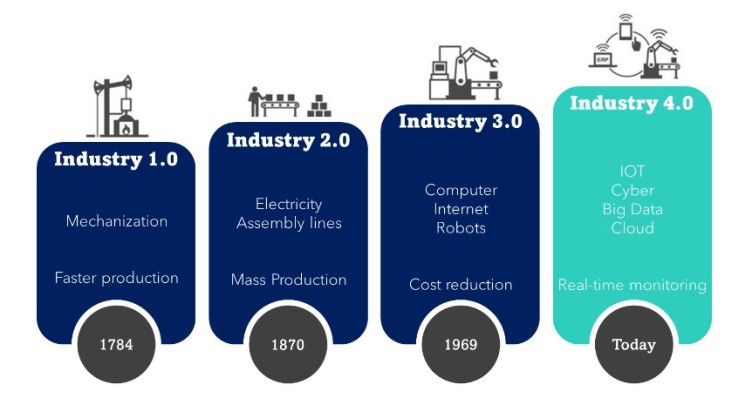The Development of the Industrial Revolutions
The industrial revolution refers to the period of significant technological advancement that began in the 18th century and brought about immense changes in manufacturing processes and society. It is widely considered one of the most significant events in human history, as it transformed the way goods were produced, distributed, and consumed, and facilitated the emergence of modern industrialized economies. The industrial revolution led to the development of new technologies and innovations that fundamentally changed the way people lived and worked. There have been five distinct stages of the industrial revolution, also known as Industry 1.0 through Industry 4.0, each with its own unique characteristics.
Industry 1.0 – the mechanical revolution – late 18th century
The revolution started with the widespread use of mechanisms and the advent of water and steam power. This stage was characterized by the development of new machines that allowed for faster and more efficient production of goods. The most significant inventions during this period were the steam engine, cotton gin, and spinning machine.
Industry 2.0 – the industrial revolution – early 20th century
The revolution started with the widespread use of electricity and the invention of the assembly line. This stage was characterized by the introduction of mass production, which significantly reduced the cost of goods and made them more accessible to the masses. The most significant inventions during this period were the assembly line, the internal combustion engine, and the telephone.
Industry 3.0 – the digital revolution – late 20th century
The revolution started with the widespread use of computers and the development of automation. This stage was characterized using computers to control manufacturing processes, introduction of robotics to further automate production and enabled the development of new materials and technologies such as semiconductors and telecommunications, which facilitated global communication and trade. The most significant inventions during this period were the personal computer, the internet, and the smartphone.
Industry 4.0 – cyber-physical revolution – early 21st century
The revolution started with the widespread use of the internet and the introduction of the Internet of Things (IoT). This stage is characterized by the integration of physical and digital systems, allowing for real-time monitoring and control of manufacturing processes. The most significant inventions during this period were the IoT, big data analytics, and cloud computing.
Overall, the industrial revolutions have had a profound impact on society, transforming the way we live, work, and interact with each other. From the use of water and steam power to the integration of artificial intelligence, each period has been marked by significant technological advancements, which have led to increased efficiency, productivity, and economic growth. At the same time, these changes have also created new challenges, such as environmental degradation and the displacement of workers due to automation.
At Intelichain, our utilization of Industry 4.0 technologies, such as real-time data analytics and intelligent automation, revolutionizes Demand Planning. By integrating these advanced technologies into our solutions, we empower businesses to achieve accurate demand forecasts, optimize inventory levels, and enhance overall operational efficiency. With Intelichain’s innovative approach to Demand Planning, companies can stay agile, reduce costs, and improve customer satisfaction, transforming the way they navigate the dynamic market landscape.
